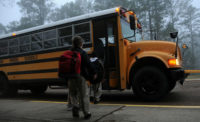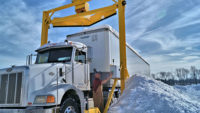Although employers cannot control roadway conditions, they can promote safe driving behavior by ensuring workers: recognize the hazards of winter weather driving, for example, driving on snow/ice covered roads; are properly trained for driving in winter weather conditions; and are licensed (as applicable) for the vehicles they operate. For information about driving safely during the winter, visit OSHA's Safe Winter Driving page.
Employers should set and enforce driver safety policies. Employers should also implement an effective maintenance program for all vehicles and mechanized equipment that workers are required to operate. Crashes can be avoided. Learn more at: Motor Vehicle Safety (OSHA Safety and Health Topic’s Page).
Employers should ensure properly trained workers' inspect the following vehicle systems to determine if they are working properly:
- Brakes: Brakes should provide even and balanced braking. Also check that brake fluid is at the proper level.
- Cooling System: Ensure a proper mixture of 50/50 antifreeze and water in the cooling system at the proper level.
- Electrical System: Check the ignition system and make sure that the battery is fully charged and that the connections are clean. Check that the alternator belt is in good condition with proper tension.
- Engine: Inspect all engine systems.
- Exhaust System: Check exhaust for leaks and that all clamps and hangers are snug.
- Tires: Check for proper tread depth and no signs of damage or uneven wear. Check for proper tire inflation.
- Oil: Check that oil is at proper level.
- Visibility Systems: Inspect all exterior lights, defrosters (windshield and rear window), and wipers. Install winter windshield wipers.
An emergency kit with the following items is recommended in vehicles:
- Cellphone or two-way radio
- Windshield ice scraper
- Snow brush
- Flashlight with extra batteries
- Shovel
- Tow chain
- Traction aids (bag of sand or cat litter)
- Emergency flares
- Jumper cables
- Snacks
- Water
- Road maps
- Blankets, change of clothes
Source: OSHA


